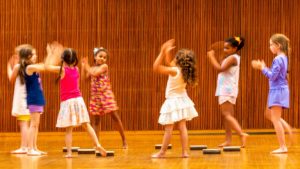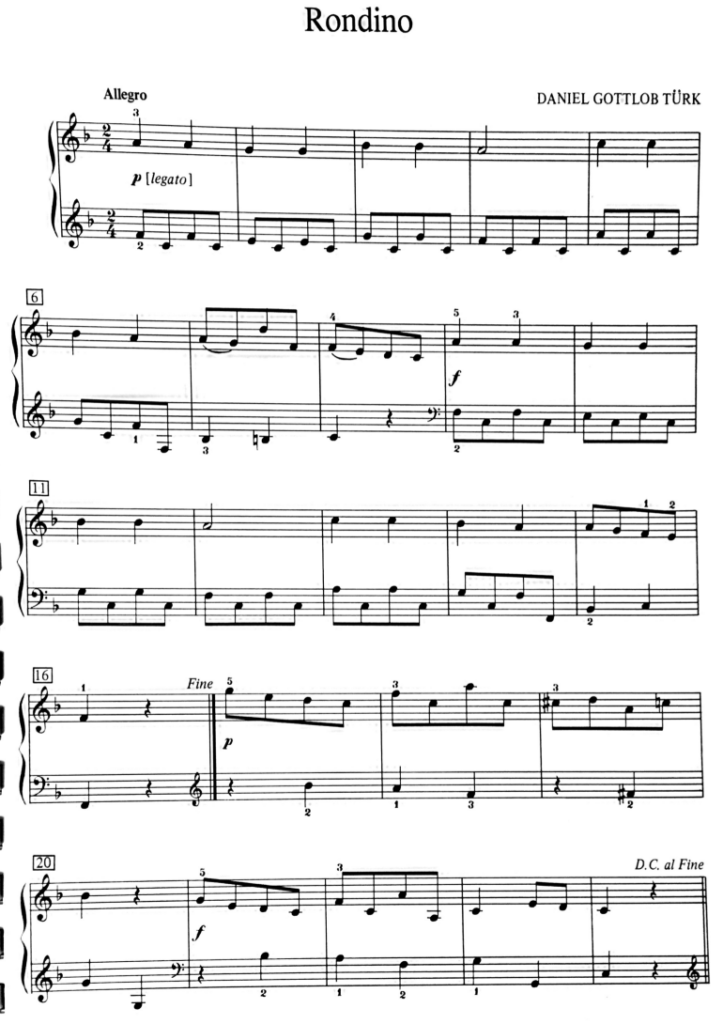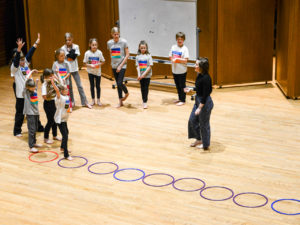
Lesson Plan for 3rd-5th graders
This is a lesson plan I might use in the beginning of the year in a community music school. Where I teach, some students will be brand new to music lessons and Dalcroze, some will be experienced at both, but most will be in between. I try to plan activities that will allow me to gauge their experience levels and their comfort with movement and singing.
In the first few weeks, I try to incorporate dynamics and tempo into the mix, even if the main subject is something more rhythmic or metrical. In this lesson there is a lot of either matching or not matching something or someone (also something that happens a lot in the beginning of the year.)
This age loves to be goofy, has a passion to be “right”, and loves knowing and exploiting rules. They have a need for independence tempered by a strong desire not to stand out from everyone else. Yes, there are contradictions! Even though I don’t always get the balance between playfulness and challenge right, it is one of my favorite ages to work with.
The Lesson:
- Movement warm-up: Dynamics
- Practice making poses with 4 body parts touching the floor; 3 parts touching; 2 parts and finally 1 part.
- Association: When the music is forte, make poses with 4 parts; mezzo forte=3 parts; mezzo piano=2 parts; piano=1 part.
Associations happen when two or more elements are coordinated; in this case, the dynamics and the number of body parts touching the floor.
- Tempo
- Move a different tempo (or way) from everyone else. If you think the piano is playing your tempo, continue. If not, stop.

- Beat and division of two in simple meter
- Reaction (and inhibition): Move the beat with locomotor or non-locomotor movement as you like. When you hear a set of two divisions (for example two eighth notes with a quarter note beat), stop. When you hear another set, start again.
Inhibition/Incitation happens when a command (in this case, the music) incites one to stop or start a movement or gesture.
- Group activity with Rondino by Türk. Partner A is the left hand, and partner B is the right hand. When the rhythm is the beat (quarter notes), walk; when the rhythm is divisions of 2 (eighth notes), orbit your partner as they walks/he walks.

- Notate examples of beat and division on the board; students speak with desired rhythmic language rhythmic unit that is being pointed to.
- Variation: make two groups (and two sets of rhythms on the board); each group follows their leader, speaking (or playing with percussion) the desired rhythmic unit.

- Dissociation: practice stepping beats and (with sticks or chopsticks) clicking the divisions. Practice the reverse.
- Variation: (reaction) “Change” = reverse hands and feet.
Dissociations happen when two or more contrasting elements are occurring at the same time. In this case, the feet and the hands are performing two different, but related, rhythms.
- Cool down + vocal technique
- Lie down. At the signal, hum a sound as softly as you can, for as long as you can.
- Repeat with different pitches, adding the following variations:
- While humming your pitch, see if you can hear your neighbor’s pitch.
- If you think your pitch is higher than your neighbors, raise both hands; if lower, cross both hands; if the same do nothing.
- Slide up or down until you think you are singing the same pitch as your neighbor.
This lesson plan was originally published in the Fall 2024 issue of Dalcroze Connections, Vol. 9 No. 1. Read the full article online. Members can receive a free hard copy of Dalcroze Connections; join today.